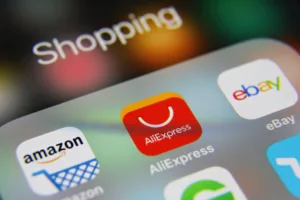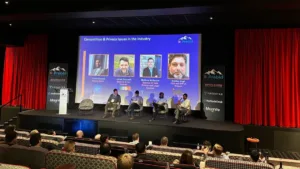By Nicole Kivel, Managing Director, Northern Europe, Criteo
There are costs to being the fastest-growing segment of the media marketplace. While estimates put the value of retail media somewhere in the region of $100bn in ad spend per annum by 2025, the eruption of new retail media businesses has created a somewhat chaotic marketplace.
Brands are dealing with hundreds of new entrants that have entered the media space with different ways of operating and measuring, along with major disconnects that have persisted between the retail media world and the rest of advertising.
For retailers, fragmentation has reared its head in having to integrate dozens of disparate systems to manage a retail media program. Added to this, they must navigate dozens of budget silos – even within a single brand advertiser – in order to maximise revenue potential.
Breaking down fragmentation
To understand fragmentation, we have to take a step back. In its most basic form, retail media is a combination of trade and shopper marketing. Trade marketing focused on building relationships with retailers and getting products placed on store shelves. Shopper marketing focused on influencing shoppers’ decisions at the point of sale.
As it evolved with the rise of digital, retail media expanded to search and performance media mainly focused on sponsored products. Agencies then began to figure out how to move retail media up the funnel through placing ads offsite — evolving what was once considered a conversion channel to a full-funnel strategy. All of a sudden performance marketing and brand marketing budgets could be added to the mix.
If a brand now spends with a given retailer across these four budget types, each team could be spending on the same inventory at different prices and using different measurement.
Without taking an ecosystem approach to retail media, persistent problems like duplicative reach and spend, format limitations, lost performance and competition with other channels will continue to hold all players back.
Piecing retail media together
To mitigate some of these issues we’ve seen brands reshape internal teams, linking shopper teams and digital teams, while agencies have worked to link channel teams with different configurations. Their efforts have certainly driven greater successes, but would certainly be more impactful with unified solutions that provide simplified, consolidated workflows managing activations across retailers.
For instance, a consistent way to allocate budget and optimise spend across retailers would take advertisers from accessing static pools of budget, to something more dynamic that reflects how consumers shop and how they want to be treated by brands.
Moreover, giving advertisers a closed-loop, ‘apples to apples’ view of metrics across retail media channels so that a brand’s budget can avoid redundancy and “divide and conquer” new impressions, new channels, and with new audiences.
Achieving $42 billion by 2025
Retail media is expected to grow to $42 billion by 2025 globally excluding Amazon and China. The opportunity presented by solving fragmentation touches all aspects of retail media but most importantly the consumer journey. An effective retail media network funds additional retailer investments in personalisation, which, in turn, drives a better consumer experience, greater customer loyalty, and increased vendor and retailer sales and bottom line.
Today, retailers need to provide advertisers with a one-stop capability for building and launching campaigns that include omnichannel inventory, the ability to see live campaigns, and measurement tools. And all of this requires technology.
Monetisation is the starting point, but true success lies in building solutions that unify the commerce ecosystem and also integrate it with the rest of the advertising ecosystem. By scaling shoppers with aggregated intelligence and nurturing richer engagement through privacy-protected personalisation, retailers open doors to countless new and larger opportunities.







